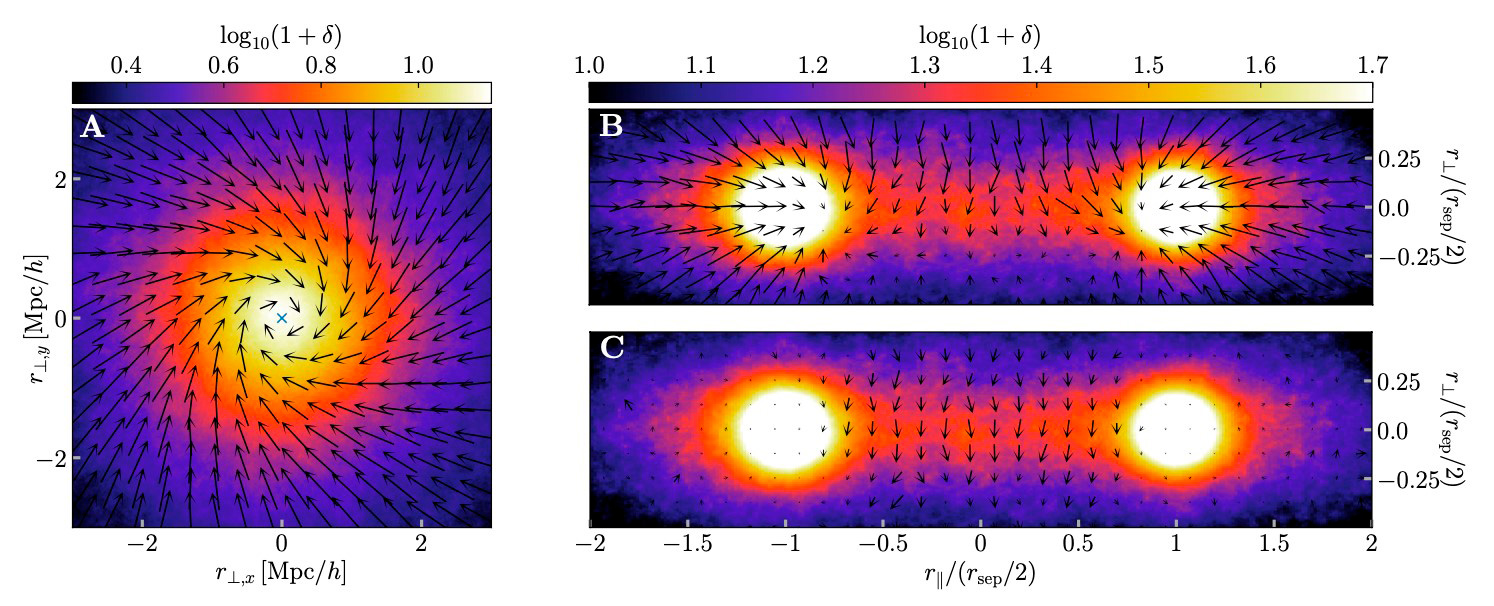Basing himself on an origami toy model, Mark Neyrinck, Ikerbasque researcher at UPV/EHU has developed a theoretical prediction that has been confirmed by observation in the real universe. The paper has been accepted for publication by the MNRAS journal.
-

Children’s reading and writing develop better when they are trained in handwriting
-

38% of the annual electricity consumption of Vitoria-Gasteiz could be produced by fitting photovoltaic panels onto the city’s rooftops
-

BiaPy, an accessible AI tool for analysing biomedical images
-

European controls to mitigate bias in AI healthcare systems are inadequate
Intergalactic filaments found to spin
- Research
First publication date: 15/06/2021

Spinning things abound in the Universe, from tiny to vast, and astronomers may now have found the vastest. Electrons around atoms, spinning tops, and figure skaters can all rotate. This is already a vast scale difference; a figure skater is some 10 billion times larger than an atom. If we zoom out from a figure skater again by the same factor that took us up from the tiniest atomic length scales, we reach lengths of tens of thousands of light years, nearly the radius of our Milky Way galaxy. This rotates too, with a rotation period, or "galactic year", of hundreds of millions of years.
Now, an international study in which Mark Neyrinck, Ikerbasque researcher at UPV/EHU has participated, has measured the rotation of objects still hundreds to thousands of times larger, called intergalactic filaments. They suspect these are the largest, or at least longest, rotating things in the Universe. The team measured this rotation in computer simulations that model the formation of galaxies, and the cosmic web of filaments that links galaxies together.
A typical rotating filament that they studied is tens of millions of light-years long, and millions of light-years thick, rotating about its axis rather than lengthwise. This rotation is not quite like a solid body or car axle, such that the edges of the column move much faster than matter near the center. Nor is it quite like a vortex or tornado, with speeds much faster in the center; it is between these extremes. A filament also usually has substantial substructure, comprised perhaps of many galaxies along it. If a galactic year is long, a filamentary year is absolutely ponderous. Most of them have yet to complete a full rotation since they formed, billions of years ago. But some rotate faster, and their vast size means that the rotation speed is still fast by human standards, hundreds of thousands of km/h.
Hearing of this theoretical finding, another team, led by Noam Libeskind at the Leibniz Institute for Astrophysics in Potsdam, went out looking for rotating filaments in the real Universe. They found that many real filaments do rotate, in a sample of galaxies and filaments from the Sloan Digital Sky Survey, which mapped millions of galaxies in the sky. This new article appeared yesterday in the journal Nature Astronomy. A computer simulation directly contains the velocities and positions of matter necessary to measure rotations, but in the real Universe, the measurement had to be a bit less direct. Astronomers can measure whether an object is receding or approaching, by measuring its Doppler redshift or blueshift. The observational team found that many filaments stretching across the sky had galaxies moving toward us on one side, and galaxies moving away on the other; the simplest explanation of this is that the filaments are rotating.
His discovery has largely verified the theoretical predictions. This is one of the rare situation in which a theoretical prediction has been confirmed almost simultaneously by observations. Although several other astronomers have found that filaments are swirling environments that can spin up galaxies, the idea to measure filament rotations was inspired by something totally different, an origami toy model of the cosmic web, developed by Mark Neyrinck, Ikerbasque researcher at UPV/EHU. In this origami toy model, all galaxies and filaments in the cosmic web arise from gravity-driven folds in a three-dimensional version of origami paper. It is a bit like an angular blob of jelly being sliced off of a cube, and put back on top of the rest of the jelly; only dark-matter jelly-slices can pass through each other to build up structures like this.
In this model, a filament is a cosmic Toblerone, and generally carries rotation; if a filament is linked to a rotating galaxy (and it typically is), it must rotate. "It is amazing that this toy model based on origami twist folds has anything to do with the way filaments rotate in the real Universe", Neyrinck said. "I'm not aware of a better example of an apparent detour through art enabling scientific discovery".
Bibliographic reference:
Qianli Xia, Mark C. Neyrinck, Yan-Chuan Cai, Miguel, A. Aragón-Calvo
Intergalactic filaments spin
MNRAS



